In Case You Missed It Part 5 - A Selection of Recent Acquisitions
We are back with our fifth highly subjective selection of titles recently added to the collection (during late spring-summer, mostly). These are the overlooked and perhaps under-promoted, old and new, imported and domestic, from small presses and large, covering the mainstream and the obscure—but all books that caught our eye. We hope you will find something here to add to your reading queue.
To see additional recent books, check our monthly New Books lists, which features over 200 selections, and is always available on our website and at the Reference Desk. And, of course, get in the stacks and have a browse around. You never know what you might find.
Looking for more to read? See previous “In Case You Missed It” posts here (#1), here (#2), here (#3) and here (#4). To see a list of books coming to the Library this fall, click here.
Jump to: LANGUAGE, LITERATURE, ESSAYS, PUBLISHING | THE ARTS | HISTORY, BIOGRAPHY | SCIENCE, PSEUDO-SCIENCE, SOCIAL SCIENCE, PSYCHOLOGY
LANGUAGE, LITERATURE, ESSAYS, PUBLISHING
Rebel Writers: The Accidental Feminists | Celia Brayfield
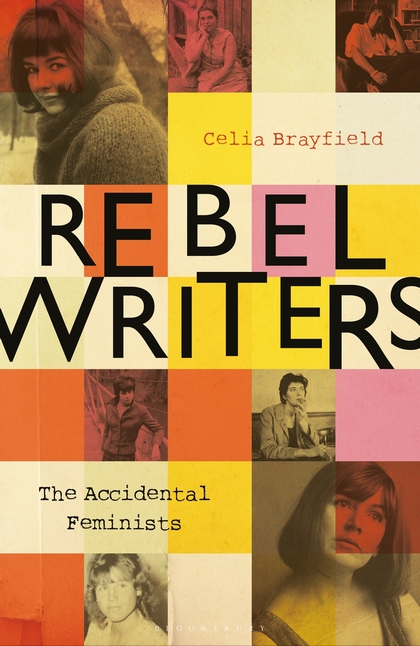
Recently there has been a renewed interest in British women writers of the early and middle twentieth century, writers like Elizabeth Taylor and Barbara Pym, who always find a large and enthusiastic audience at the Society Library. Publishers, like the Persephone Press and Virago, have done much good work to shine a light on these deserving books, but this interest hasn’t yet spilled into the later parts of the 20th Century. And when considering British literature of the 1960s, most critics concern themselves with the Angry Young Men. Perhaps this is about to change thanks to Celia Brayfield’s book. She sees a connection in seven young female writers who made their debuts in the late 1950s and early 1960s. These writers are Shelagh Delaney, Edna O’Brien, Lynne Reid Banks, Charlotte Bingham, Nell Dunn, Virginia Ironside and Margaret Forster. Perhaps Brayfield’s book will lead you to a new favorite, waiting to be re-discovered. You will find dozens of books by the writers featured in Brayfield's book in our stacks.
Lost Girls: Love, War and Literature: 1939-51 | D.J. Taylor
The writer Peter Quennel referred to the young women in London during WWII as ‘lost girls.’ D.J. Taylor has picked a prominent quartet of these women to paint a picture of what life was like in literary London during the war. Who were the Lost Girls? Lys Lubbock, Sonia Brownell, Barbara Skelton and Janetta Parladé were all associated with the decade's most celebrated literary magazine, Horizon, and its charismatic editor Cyril Connolly. The Guardian notes that “Taylor, who has previously written about the bright young things of the interwar years, makes a convincing case for seeing Sonia and her peers as a racier, tougher and far more intelligent group than has previously been allowed… Treated atrociously by the predatory writers and artists who professed to worship them, these young women acquired a resilience that enabled them to give every bit as good as they got.” Though this serves as a corrective of sorts, don’t let that distract you from the many gossipy pleasures and shameless escapades that Taylor includes in his book.
New York Review Books Reprints
New arrivals from the excellent New York Review Books publishing series always generate interest and excitement. Here are a few that landed on our shelves during recent months, or will very soon (click on the NYRB link after the title for more information):
- Three Summers | Margarita Lymperake (translated from the Greek by Karen Van Dyck) (NYRB)
- A King Alone | Jean Giono (translated from the French by Alyson Waters) (NYRB)
- The Secret Commonwealth of Elves, Fauns, and Fairies | Robert Kirk (NYRB)
- Notebooks: 1936-1947 | Victor Serge (translated from the French by Mitchell Abidor and Richard Greeman)
- Abel and Cain | Gregor von Rezzori (translated from the German by David Dollenmayer, Joachim Neugroschel and Marshall Yarbrough) (NYRB)
- Stalingrad | Vasily Grossman (translated from the Russian by Robert Chandler and Elizabeth Chandler) (ebook also available) (NYRB)
- Nada | Jean-Patrick Machette (translated from the French by Donald Nicholson-Smith) (NYRB)
- Käsebier takes Berlin | Gabriele Tergit (translated from the German by Sophie Duvernoy) (ebook also available) (NYRB)
Fabulosa!: The Story of Polari, Britain's Secret Gay Language | Paul Baker
In the early 20th century, gay men in Great Britain developed Polari, a slang they used to communicate with each other that was undetectable to outsiders. As sex between men would remain criminalized in the UK until 1967, the impenetrability of this language was of dire importance. Linguists call this kind of language a criminal argot. In his review of the book in the Spectator, Philip Henscher writes that “criminal argots are always fascinating and peculiar, and this one, with its astonishing verve and lewdness, its harmless and insistent lechery, has a ludicrous charm too.” He’s not wrong. Paul Baker is a linguist and this study of Polari is deeply researched and thoughtfully presented. But better than that, it’s wicked and fun – a wonderful history of the men who managed to turn a linguistic necessity into a delight.
Europa Compass – an imprint from Europa editions
Europa Editions, long a favorite with our members, publishes quality fiction, much of it in translation. Often, these translations are the first introduction of these authors to English speakers. Elena Ferrante, Muiel Barbery, and Michel Bussi are but three of the many authors Europa has made available to us. This year they launched Europa Compass, a new nonfiction imprint featuring titles on travel, contemporary culture, popular science, history, philosophy, and politics, with the goal to “introduce Anglophone readers to new voices and points of view from all four corners of the map." The Library recently purchased the first title released under the imprint, A Summer with Montaigne: On the Art of Living Well by Antoine Compagnon, with more titles due to arrive at the Library this fall.
K-Punk: The Collected and Unpublished Writings of Mark Fisher (2004-2016) | Mark Fisher
Mark Fisher was an English writer, critic, cultural theorist, and academic who took his own life in January, 2017, at age forty-eight. He began his blog, K-Punk, in 2003 and it developed a sizable following over the years, as did his first book, Capitalist Realism. He was regarded in certain circles as one of the leading voices on the left, acclaimed for insightful critiques of neo-liberalism and its effect on late 20th century and 21st century culture. K-Punk is a generous collection of his blog posts, short essays, interviews, and works in progress, analyzing radical politics, music, and popular culture.
Notes from a Black Woman's Diary: Selected Works of Kathleen Collins
Poet, playwright, writer, pioneering independent film director, civil rights activist, and educator, Kathleen Collins died largely unknown in 1988, at the age of 46. In the 21st century, however, her work has been rediscovered with heaps of critical praise. Notes from a Black Women’s Diary features sketches, journal entries, letters, short stories, plays and screenplays, and follows the revival of her 1982 film “Losing Ground’ in 2014 and a collection of stories, Whatever Happened to Interracial Love? written in the 1960s and published in 2015. The New York Times praised “her voice and vision [as] “idiosyncratic and pitiless, combining mischief and crisp authority, formal experimentation and deep feeling” as well as the “sleekness of her sentences.”
A Frank O'Hara Notebook | Bill Berkson (introduction by Ron Padgett, afterword by Constance M. Lewallen)
The poet Bill Berkson had been gathering materials and keeping notes for years with a loose plan to write a book about his friend Frank O’Hara. Though the project never coalesced into something more formal, this work reproduces in facsimile the notebook Berkson kept for the project. Among its treasures, you’ll find handwritten accounts of times Berkson and O’Hara spent together, lists, newspaper clippings, reproduced artworks, and even a flyer for a film made of two of O’Hara’s plays. This is not a final product, though it’s revelatory all the same. As Ron Padgett says in the introduction, “…there is no substitute for the intimacy of script and the hopscotch jottings in a notebook such as these, here reproduced in a facsimile whose faithfulness allows us to imagine it, however fleetingly, as the actual object.” It is a fascinating portrait of the artists and poets surrounding O’Hara, and of New York City in the 1960s.
Faber & Faber: The Untold Story | Toby Faber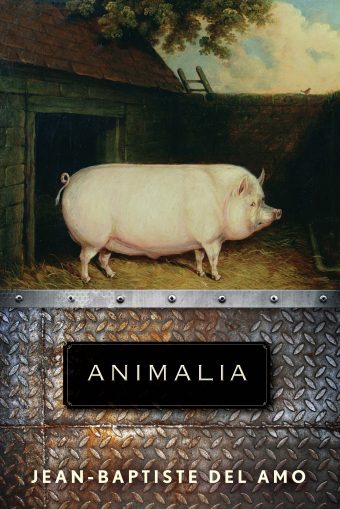
Remarkably, Faber & Faber has survived ninety years as an independent publisher. Tony Faber, grandson of the firm’s founder and a former managing director, describes it as “midwife at the birth of modernism” (within its first year TS Eliot was brought on as a director). The firm would go on to publish Ezra Pound, WH Auden, James Joyce’s Finnegans Wake, Robert Lowell, Sylvia Plath, Ted Hughes, Philip Larkin, and Seamus Heaney. The Untold Story is comprised of extracts from original documents (letters, memos, board minutes, etc.), with commentary from Faber. It makes for an exciting, informative, and occasionally funny history of literature in the 20th century and the tensions of art and commerce.
Jacques Schiffrin: a Publisher in Exile, from Pléiade to Pantheon | Amos Reichman
Jacques Schiffrin, a giant of twentieth century publishing, managed to make a name for himself after twice fleeing his home. Originally from Azerbaijan, he fled to Paris following the Bolshevik Revolution. There, in the late 1920s, he created Éditions de la Pléiade, which published classics in compact format, and championed writers like André Gide and Antoine de Saint-Exupéry. Forced to flee again during the Nazi occupation of France, Schiffrin arrives in New York, where he partners with fellow refugee Kurt Wolf and co-founds Pantheon. This is the first biography of Schiffrin to be published.
Animalia | Jean-Baptiste Del Amo (translated from the French)
“Likely to be hailed as a modern classic.” –The Guardian
Jean-Baptiste Del Amo has published four acclaimed novels in France, and has won the Goncourt First Novel Prize. Animalia is his first to appear in English. (Translator Frank Wynne has translated works by Michel Houellebecq, Patrick Modiano, and Javier Cercas.) Animailia chronicles generations of a doomed pig-farming family in the French village of Puy-Larroque through the 20th century. Reviews have featured kind words of gushing praise alongside adjectives like “cruel,” “savage,” “unpleasant,” “dirty,” “violent,” “spoiled,” “pungent” and “nightmarish.” Publisher’s Weekly raves (in a starred review): “In mythic, arresting style…The florid prose has an incantatory power well suited to the festering enmity, inhumanity, and majestic squalor on display. This uncompromising vision will leave readers breathless, thrilled, and exhausted.”
No-No Boy | John Okada
The Atlantic Monthly recently described Okada’s 1957 novel as a chronicle of “the reentry into civil society of young second-generation Japanese men who had served in the U.S. military during World War II. More particularly, through the character of Ichiro Yamada, he wrote of draft resisters who spent the war in prison. In so doing, he probed the intense center of the Japanese American community’s internal conflicts—confusions of loyalty and rights of citizenship, racial self-hatred and shame, the immigrant’s agony of failure and loss of a future, proscriptions of silence and resistance.” No-No Boy has been reissued twice in the last few years, and is now recognized as a truly original, pioneering novel, the first to explore its subject.
I Burn Paris | Bruno Jasieński (translated from the Polish)
Poet, novelist, and playwright, Bruno Jasieński (1901―1938) was the leader of the Polish Futurism movement. His avant-garde novel I Burn Paris was serialized by Henri Barbusse in 1928 and tells the story of a disgruntled factory worker who poisons Paris's water supply. Jasienski was deported from Paris after its publication. He spent the last decade of his life in the Soviet Union writing in both Polish and Russian, was eventually expelled from the Party, put on trial, and executed in 1938.
Readers’ Guides to Essential Criticism Series
The goal of this series is to “provide a starting point to the essential criticism on key authors….The editorial narrative in each of the Readers' Guides links extracts from crucial reviews, essays and articles, for a comprehensive understanding of the most influential criticism.” The Library owns several volumes in the series focusing on writers like Jane Austen, Virginia Woolf, Walt Whitman, and more. For more series featuring criticism of canonical authors, see this blog post.
The Ship | Hans Henny Jahnn (translated from the German)
20th-century German writer Hans Henny Jahnn’s works are not easily described—efforts to do so are often a desperate grasping at adjectives that fall short, fumbling for comparisons that don’t pan out, literary references that make one say “nice try,” and forcing Jahnss’s works into literary styles or “schools” to which he would never belong (and which would not have wanted him). But here are a few words, phrases, and names that are frequently used: Gothic romanticism, expressionism, modernism, symbolism, horror, surrealism, experimental, Artaud, Bataille, Kafka, Sade, Bernhard, Doblin, Joyce, Lovecraft, morbid, erotic, doom-laden… Not much of his work has been translated, but The Ship (1949) is likely the best place to start. Read more about the fascinating Jahnn in the TLS here.
THE ARTS
Behind the Screen: How Gays and Lesbians Shaped Hollywood, 1910-1969 | William J. Mann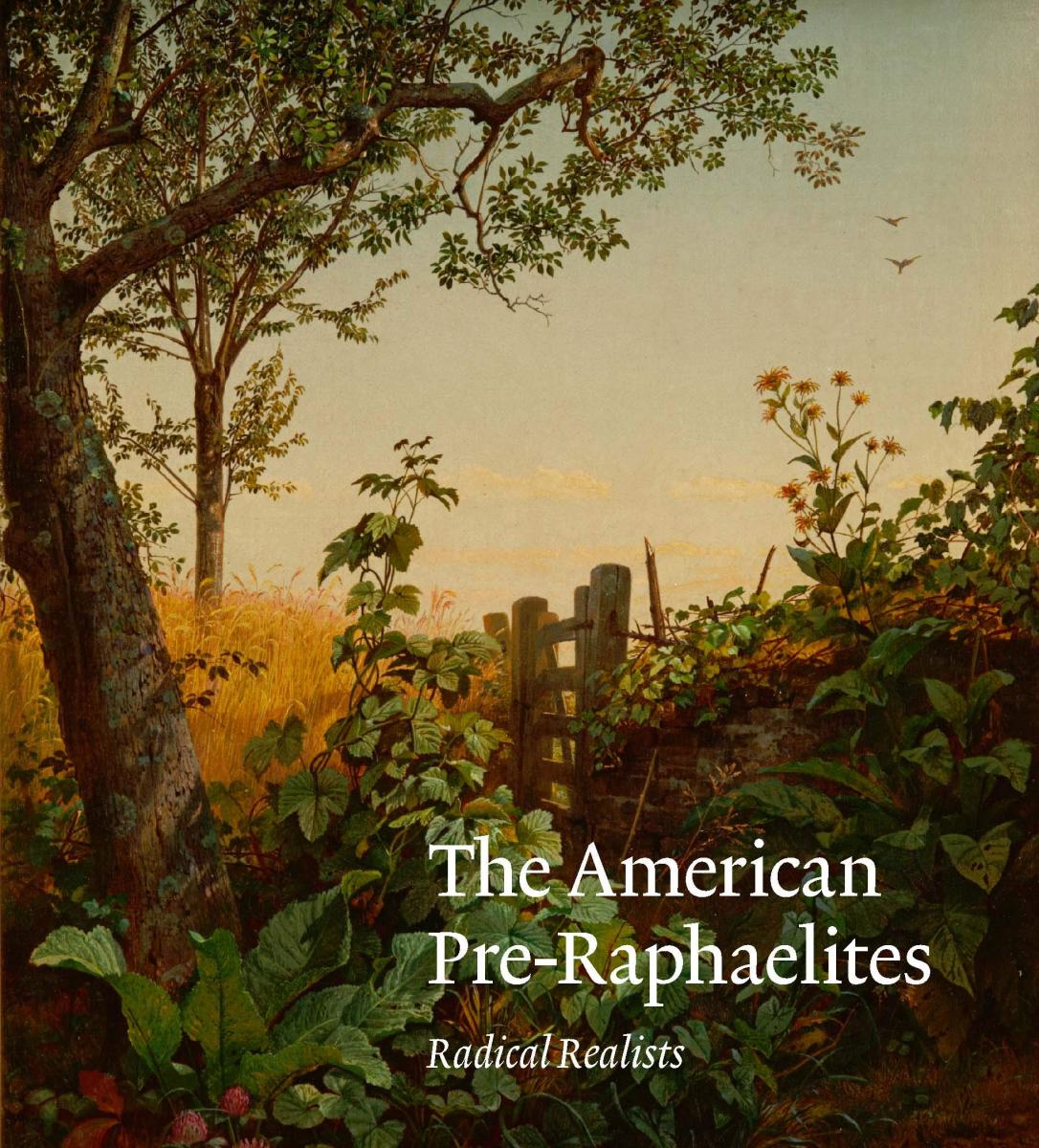
We somehow missed this one when it was first published in 2001 to wide acclaim. Library Journal: “a readable, slightly gossipy, yet scholarly history of gays and lesbians in Hollywood…Mann examines how the movie capital of the world was transformed by a host of writers, directors, designers, actors, and producers often at odds with the official codes and mores of the times.” Publisher’s Weekly: “…delivers an astute and groundbreaking study of the impact of gay and lesbian actors, set designers, writers, costume designers, editors and producers on studio-era Hollywood. Without directly correlating sexual identity and artistic production, Mann applies sharp, original research and interviews to re-create the intricate lives and work of ‘gay Hollywood,’ offering a new lens for examining the complicated, sometimes contradictory relationship between sexual activity, identity and work.”
The Self-Portrait: From Schiele to Beckmann | edited by Tobias G. Natter
This impressive catalog accompanies an exhibition held at Neue Galerie in 2019 that features 70 self-portraits by more than 30 Austrian and German artists made between 1900 and 1945.
I Like to Watch: Arguing my way Through the TV Revolution | Emily Nussbaum
Emily Nussbaum has written for The New Yorker since 2011. She is the winner of the 2016 Pulitzer Prize for criticism and a 2014 National Magazine Award. Previously, she was the TV critic and editor of the Culture Pages for New York magazine. The essays in I Like to Watch deflate pretentions, challenge cultural hierarchies (TV vs. film vs. literature) and genre and style hierarchies (action vs. comedy vs. drama, etc.), exploring the need for a more expansive vision of artistic ambition and voices. “Nussbaum has proven to be a shrewd, highly reliable source for evaluating this rapidly progressing medium.” (Kirkus)
Culture in Nazi Germany | Michael H. Kater
Literary Review: “Michael Kater has written a valuable overview of this subject. He ranges widely, summarising a mass of research as well as distilling his own pioneering work on classical music and jazz in Nazi Germany. He writes with sympathy and insight about those who emigrated, and is mostly non-judgemental about the prominent individuals who stayed…” The Times: “…this book seeks to do more than provide a chronicle; it sketches the contours of the relationship between culture and tyranny.”
Dancing with Merce Cunningham | Marianne Preger-Simon (foreword by Stuart Hodes; afterword by Alastair Macaulay)
Preger-Simon, a close friend of Cunningham, provides a close, affectionate, and revealing account of the modern dance choreographer, and a rare view of exactly how he taught and interacted with his students. Preger-Simon met Cunningham for the first time in Paris, connected with him again in New York City and became one of the founding dancers in the Merce Cunningham Dance Company. Cunningham’s orbit included several major figures in the post-war arts such as John Cage Robert Rauschenberg, and Jasper Johns, as well as Black Mountain College in North Carolina. The Los Angeles Review of Books notes that the book “captures an entire era of the American avant-garde, reflecting the multimedia approach that the modern dance world embraced.”
The American Pre-Raphaelites: Radical Realists | Linda S. Ferber and Nancy K. Anderson
Published in conjunction with a major exhibition at the National Gallery in Washington, DC, this catalog analyzes the history and historiography of the American Pre-Raphaelites, and how the movement made its way from England to America. The book shows John Ruskin’s profound influence on a small group of American artists who were working during the Civil War and beyond. Wall Street Journal: “The superb catalog illuminates a long-overlooked moment in American art.”
Hot, Cold, Heavy, Light: 100 Art Writings, 1988-2018 | Peter Schjeldahl
Peter Schjeldahl has been the art critic for the New Yorker since 1998, and wrote for the Village Voice prior to that. Hot, Cold, Heavy, Light collects 100 writings that “form a group portrait of many of the world’s most significant and interesting artists. From Pablo Picasso to Cindy Sherman, Old Masters to contemporary masters, paintings to comix…. in precise, jargon-free prose.” The New York Times: “With artist after artist in Hot, Cold, Heavy, Light, Schjeldahl arrives at some similarly unexpected yet exacting truth…He has the ability to freeze an artist cold in a line…with meticulous, writerly precision.”
Make My Day: Movie Culture in the Age of Reagan | J. Hoberman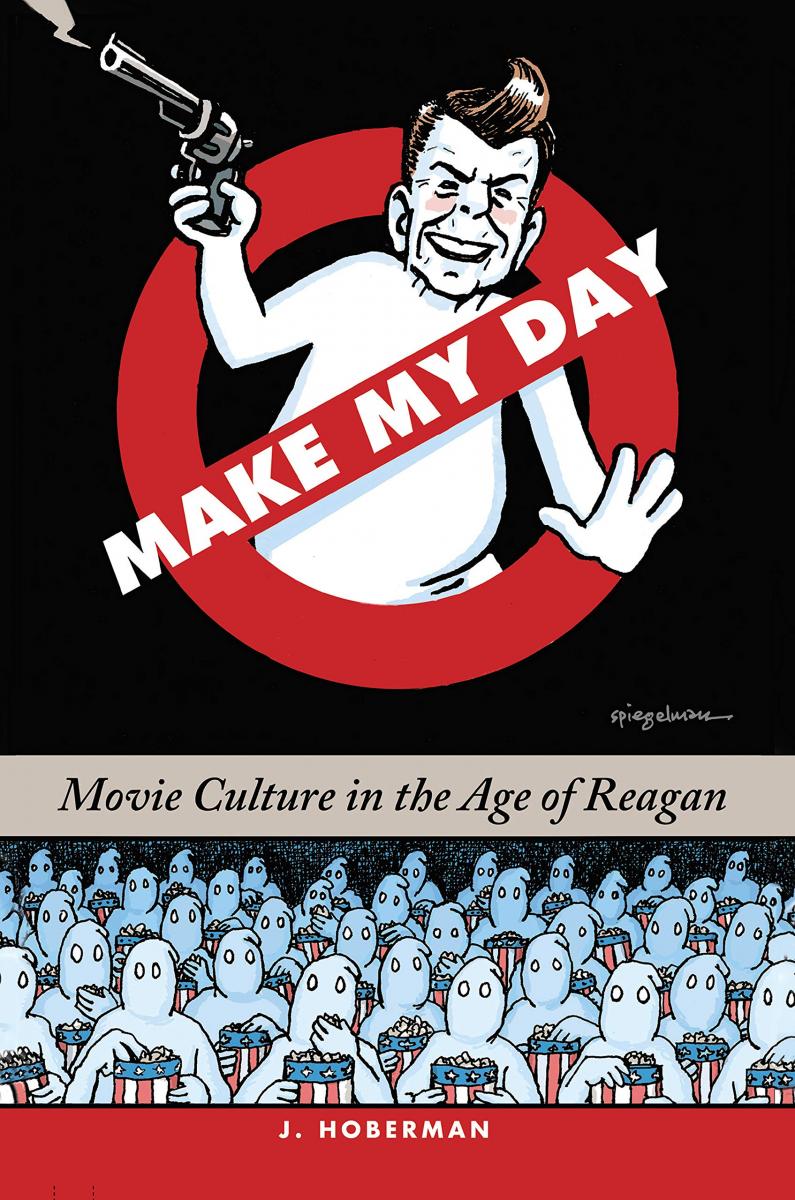
Hoberman was film critic for the Village Voice for over thirty years and has written for Artforum, the London Review of Books, The Nation, and the New York Review of Books. Make My Day is the third book in his Found Illusions trilogy and chronicles film during the era of Ronald Reagan's ascendance and his eight years in office. Throughout the three books, Hoberman shines a light on the relationships between cinema and the social, political, and cultural environment of 20th-century United States. Library Journal: “…in this rigorous, scholarly work, Hoberman investigates the deeper links between entertainment and politics.”
Up Jumped the Devil: The Real Life of Robert Johnson | Bruce Conforth and Gayle Dean Wardlow
A giant of American music, blues musician Robert Johnson died at age 27 in 1938. Since his mesmerizing 1930s records were reissued in the 1960s, he has remained a mysterious, captivating figure, with obsessive fans and the subject of far-ranging mythology, misinformation, legend, and rumor (as well as source material for 1000s of excruciating blues performances). Co-authors Bruce Conforth and Gayle Dean Wardlow have over a hundred years’ study of the Delta blues between them, and reviews from the Blues Cognoscenti say that this book is the most authoritative biography of Johnson we will likely ever have, debunking myths and correcting errors about his life and music that have been perpetuated for years.
HISTORY, BIOGRAPHY
To See Paris and Die: The Soviet Lives of Western Culture | Eleanory Gilburd
Until Stalin’s death in 1953, the Soviet Union was a notoriously closed society. But in the mid-1950s, an increasing number of Western novels, films, and paintings made their way to eager Soviet citizens. To See Paris and Die is a history of this moment, an opening to Western culture known as “The Thaw.” Gilburd looks at the reception and influence of Hemingway and Salinger’s novels, French and Italian cinema, the paintings of Pablo Picasso and more, exploring how western culture was understood by Soviets. But Gilburd notes that “translation lies at the heart of this book,” and shows translation to be not only “a mechanism of transfer”, but also “a process of domestication” abiding by the principle that “every translation of a foreign work must become a phenomenon of Russian literature.” The Financial Times praised “Gilburd’s deep research and enthralling stories .” Read an excellent review in the London Review of Books by Sheila Fitzpatrick here.
Chanel’s Riviera: Life, Love & the Struggle for Survival on the Côte d’Azur, 1930–1944 | Anne de Courcy
This one won’t be out in the U.S. until February 2020, but we received the UK edition during the summer. The Literary Review: “In Chanel’s Riviera, Anne de Courcy has written a well-researched and compelling story. She maintains a remarkable balance between, on the one hand, Chanel and her world of the rich and famous and, on the other, the lives of ordinary people desperately struggling to survive in a country on the brink of annihilation. Drawing on an immense volume of material, she has succeeded not only in constructing an intriguing portrait of Chanel herself but also in expertly conjuring the two very different worlds that then existed side by side.”
In the Shadow of Vesuvius: a Life of Pliny | Daisy Dunn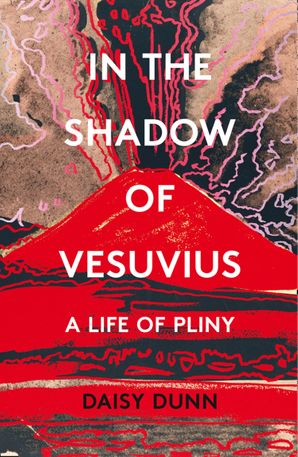
Dunn (Catullus' Bedspread) offers a portrait of Pliny the Younger (born around AD 62) a lawyer, senator, poet, and chronicler of Roman times from Emperor Domitian to Emperor Trajan, as well as his uncle Pliny the Elder, author of the epic Natural History who died in the eruption of Vesuvius. She “resurrects the 'father and son’ to explore their beliefs about life, death and the natural world in the first century AD. “ The Literary Review praised Dunn’s lively prose, research, and compelling narrative structure.
Shadows on the Tundra | Dalia Grinkeviciute (translated from the Lithuanian by Delija Valiukena)
That this memoir exists at all is truly extraordinary. In 1941, the 14-year-old author and her family were deported from their native Lithuania to a labour camp in Siberia. At the age of 21, she escaped the gulag and returned to Lithuania, writing her memories on scraps of paper and burying them in the garden, fearing they might be discovered by the KGB. The text was found in 1991, four years after her death. The Spectator noted that the book “deserves to become a classic.”
Exile, Writer, Soldier, Spy: Jorge Semprún | Soledad Fox Maura
Semprún led a truly extraordinary life. Born in 1922 in Madrid, he fled to France during the Spanish Civil War, and later joined the Resistance as a student during WWII. He was arrested by the Gestapo and sent to Buchenwald. After the war, he returned to Spain as an undercover Communist Party operative, and then escaped back to France, where his novels (most famously, The Last Voyage) and screenplays (Z and The War Is Over) brought him fame and acclaim, including Oscar nominations. The Times Literary Supplement: “Fox Maura's treatment of all this is entertaining, fast-paced, and fully informed.”
Hope and History: a Memoir of Tumultuous Times | William J. vanden Heuvel (foreword by Douglas Brinkley)
US Ambassador William J. vanden Heuvel presents his most important public speeches and writings, compiled and presented over eight decades of adventure and public service, woven together with anecdotes of his colorful life as a soldier, a lawyer, a political activist, and a diplomat. Along the way, figures such as Eleanor Roosevelt, William J. "Wild Bill" Donovan, President John F. Kennedy and RFK, Harry S. Truman, and Jimmy Carter make appearances as vanden Heuvel’s life and work touches on the Vietnam War, civil rights and school desegregation, the prison crisis of Attica, the 2003 invasion of Iraq, and more.
King Con: The Bizarre Adventures of the Jazz Age's Greatest Impostor | Paul Willetts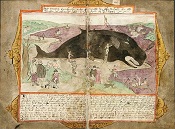
Willetts chronicles the strange tale of Edgar Laplante, a drifting, grifting small-time flim-flam man, vaudeville performer, and medicine show huckster, who abandoned the short con in 1917 by hatching an ambitious and bizarre plan to reinvent himself as Chief White Elk, charismatic Cherokee nation leader. Under the pretense of raising money for struggling Native American reservations, Laplante dressed in buckskins and a feathered headdress and traveled throughout the American West, and eventually around the world. In the Riviera, Laplante found his biggest mark in a rich Hungarian countess, who was instantly smitten with the con man and launched him to greater heights of fame and swindling.
Last Witnesses: An Oral History of the Children of World War II | Svetlana Alexievich (translated from the Russian by Richard Pevear and Larissa Volokhonsky)
Following translations of her acclaimed books on women in World War II (The Unwomanly Face of War), Chernobyl (Voices from Chernobyl), and more, this is the latest work by master Russian oral historian Svetlana Alexievich to be translated. First published in Russian in 1985, it records first-hand accounts of people who were children during WWII, living in villages in Russia and Eastern Europe. Luc Sante in Bookforum notes that “in her books, Alexievich transforms [oral history], turning it into literature through her editing and orchestration…[with] a distinctly musical flow to the way she groups speakers and subjects.” Sante goes on to write that the accounts are “emotionally overwhelming in aggregate. The book is guaranteed to leave any reader a sodden mess. If the most nightmarish recollections do not summon tears, those will be brought forth by the instances of kindness.”
The Adventures of Maud West, Lady Detective: Secrets and Lies in the Golden Age of Crime | Susannah Stapleton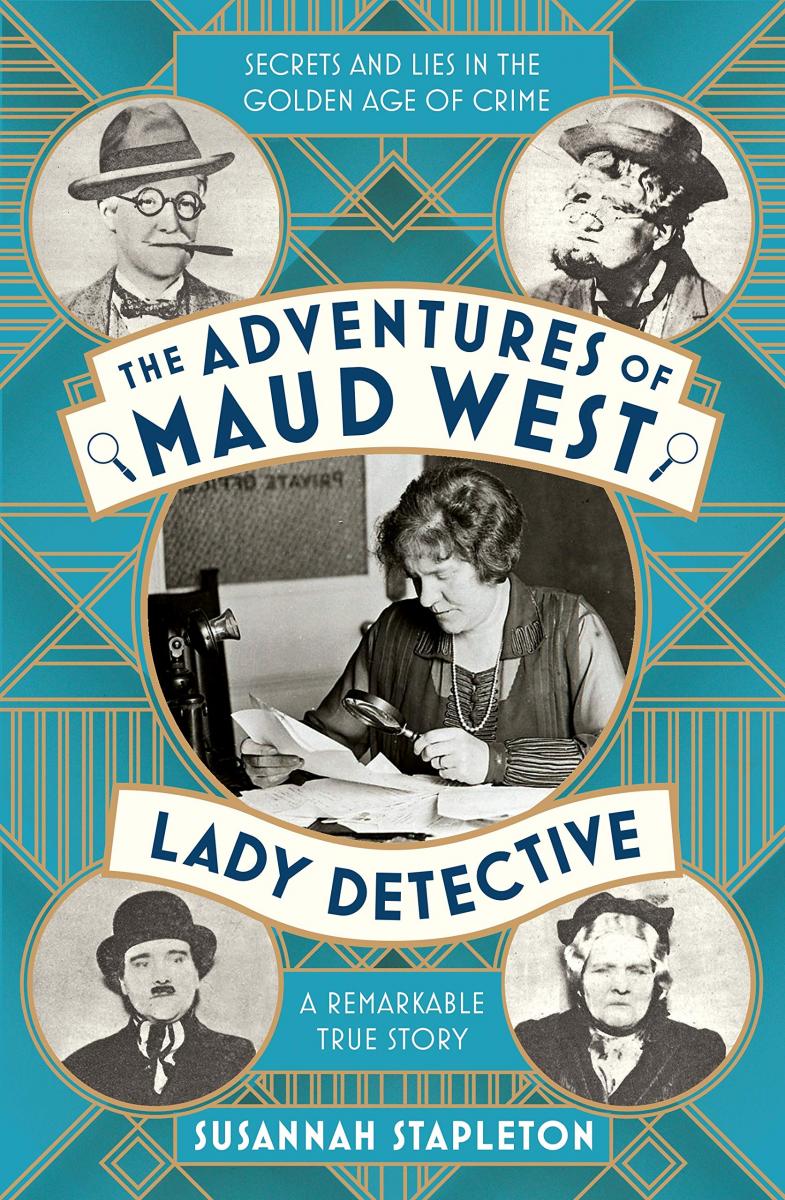
During the time Miss Marple and Harriet Vane were delighting readers, a real life lady detective was making (and making up) headlines. Maud West ran a detective agency for London society’s finest for more than 30 years in the first half of the 20th century. Knowing the benefits of publicity, she wrote up her exploits, and when those wouldn’t excite, embellished them or invented new ones entirely for London’s newspapers. Susannah Stapleton has turned into a sort of detective herself in her dogged pursuit of the real Maud West, whose penchant for disguises and obfuscation made her a great detective, but a difficult subject for a biography. The Literary Review raves: “The Adventures of Maud West, Lady Detective is delightfully well written, with both sympathy and empathy; it is jaunty, engaging and witty without being arch. A triumph.”
Sea Journal: Seafarers’ Sketchbooks | Huw Lewis-Jones
This beautifully presented book is not to be missed if you are interested in exploration, sailing, art, or natural history. Lewis-Jones presents fragments from the sketchbooks of over 70 explorers, along with career and biographical information for each seafarer. The works span the 15th-20th centuries, and include explorers both well-known and obscure. The well-chosen sketchbook and notebook excerpts capture the beauty, terror, and thrill of exploration. The text is followed by a fairly lengthy “suggested reading” list.
The Stonewall Reader (Penguin Classics/New York Public Library; foreword by Edmund White)
Collected from the archives of the New York Public Library, Jason Bauman has gathered and anthologized a diverse group of LGBTQ voices from before, during, and after the riots. And lest you think you have nothing left to learn about Stonewall, read what Alexander Chee says about The Stonewall Reader in The New Republic. “The book’s mix of familiar and unfamiliar didn’t just re-contextualize the riots for me. I came to understand myself and my life differently. I didn’t even know what I’d lost or gained from these stories and their contexts. The Stonewall Reader seems designed to be widely adopted in classrooms and should be, but, to be sure, it is for anyone, even those who think they know this history."
The Cooking Gene: a Journey Through African American Culinary History in the Old South | Michael Twitty
This widely acclaimed work of culinary history looks at regional Southern food through the perspective of our most divisive issue, race. Loosely classed as a memoir, Twitty takes readers on a tour through the south, tracing the roots of his own family, looking closely at race, politics, economics and the history of slavery and examining the question of who “owns” southern cuisine as well as the politics of the origins of soul food, barbecue, and all Southern cuisine. Oh yes, there are recipes, too.
SCIENCE, PSEUDO-SCIENCE, SOCIAL SCIENCE, PSYCHOLOGY
The Jung Cult: Origins of a Charismatic Movement | Richard Noll
Noll, a clinical psychologist, presents a controversial and rigorous reassessment of Carl Jung and the formulation of his theories, as well as their subsequent wide-ranging influence. Booklist: “Noll argues that Jungian analysis has evolved to a cult of personality around its founder, to the point of becoming a religion--with Jung as its prophet, and today's analysts its priesthood."
The End of Forgetting: Growing Up with Social Media | Kate Eichhorn
Historically, growing up has been about moving on—achieving a safe distance from events that typically mark childhood and adolescence But in our 21st century social media saturated world, moments that were once fleeting are now documented, always ready to surface. How will this effect today’s teenagers as they develop towards adulthood? Will they be able to distance 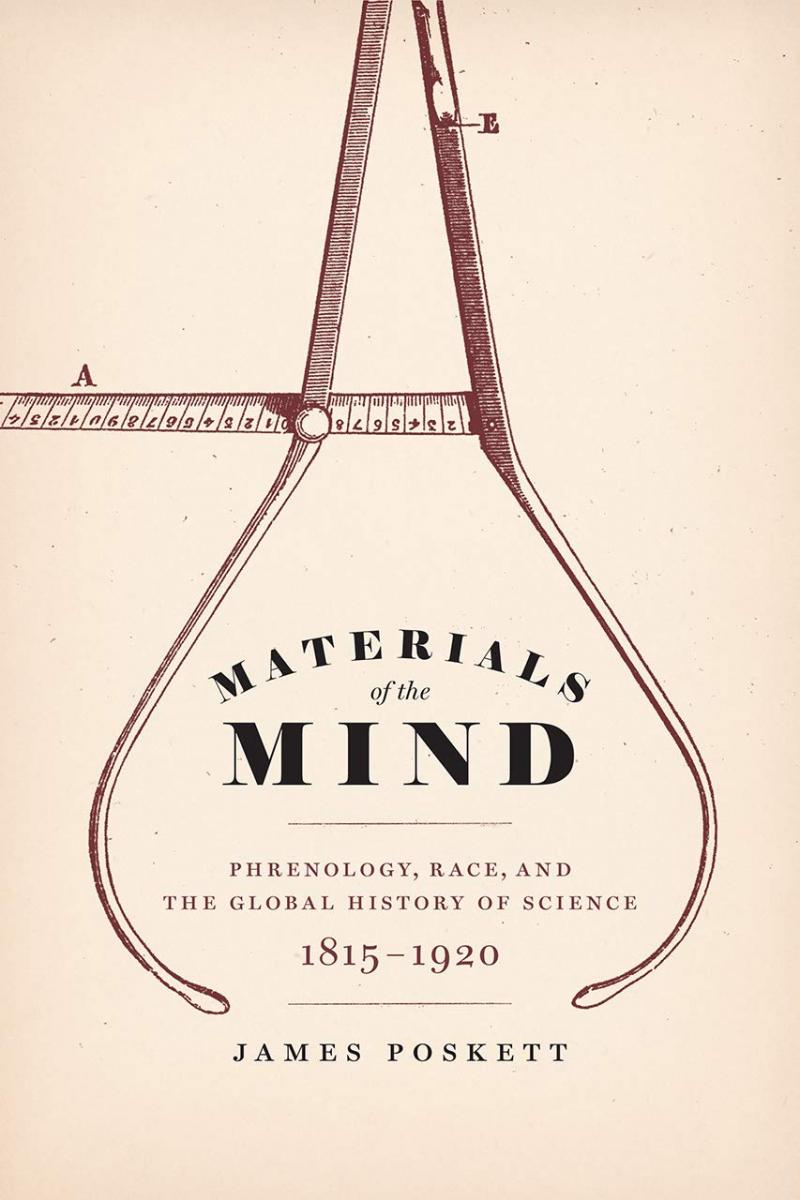 themselves from their pasts as documented on social media platforms? These are questions that Kate Eichhorn explores in The End of Forgetting. She concludes that rather than a childhood cut short by a premature loss of innocence, the real crisis of the digital age may be the specter of a childhood that can never be forgotten. While other commentators have concluded that the internet can be a space in which such self-discovery is fruitfully explored, Eichhorn argues that those spaces are shrinking in the age of social media.
themselves from their pasts as documented on social media platforms? These are questions that Kate Eichhorn explores in The End of Forgetting. She concludes that rather than a childhood cut short by a premature loss of innocence, the real crisis of the digital age may be the specter of a childhood that can never be forgotten. While other commentators have concluded that the internet can be a space in which such self-discovery is fruitfully explored, Eichhorn argues that those spaces are shrinking in the age of social media.
Eye of the Shoal: A Fishwatcher’s Guide to Life, the Oceans and Everything | Helen Scales
Where does caviar come from? (Sturgeons.) Can different fish species drown in water? (Yes.) Do fish communicate with each other? (Yes, in various ways.) Does the Piranha really eat living mammals? (Only under extreme circumstances.) In her book Eye of the Shoal: A Fishwatcher’s Guide to Life, the Oceans and Everything, Dr. Helen Scales presents the natural and evolutionary history of fish to the curious reader in a clear and comprehensible manner. Dr. Helen Scales is a broadcaster and marine biologist teaching at Cambridge University. A trained science communicator, she writes and speaks about oceans and its denizens to promote awareness above the water’s surface. Our collection also has Dr. Scales’ book on seashells titled Spirals in Time: The Secret Life and Curious Afterlife of Seashells.
Blueprint: the Evolutionary Origins of a Good Society | Nicholas A. Christakis
Chistakis is director of the Human Nature Lab at Yale University. In his latest book, he “explores the various ways human beings are fundamentally similar, despite all of our outward differences. This common humanity, he believes, has its origins in our shared evolution; thus, he insists that we carry within us an evolutionary blueprint for making a good society.” (Booklist) The New York Times describes the book as “a heavily researched argument… making a forceful case for our capacity for friendship and cooperation - a conclusion grounded in evidence from his own and others' research into real and virtual environments.” Reviews have praised the depth and breadth or Christakis’s research and his analysis. “A valuable complement to Steven Pinker's similarly themed The Better Angels of Our Nature, provides much food for thought and a refreshingly optimistic perspective.” (Publishers Weekly)
The Royal Society and the Invention of Modern Science | Adrian Tinniswood
In 1660, the Royal Society, now the world’s oldest scientific academy in continuous existence, was born in London by a group of physicians, professors of mathematics, physics, and natural philosophy, and some members of the aristocracy (financial help was a priority). The group’s goal was to foster “experimental philosophy.” This new book by Tinniswood “captures superbly the intellectual and political ferment leading up to the society’s foundation and the achievements of its early years” (Financial Times). The author devotes much more space to the Society’s gestation, founding and first 50 years when experiment-based science was still in its infancy and the lines between amateur and professional science were more blurry. Reviews have praised the straightforward prose and approach, and Kirkus writes that “Tinniswood’s writing is scientifically clear, organized, and crisp, making this short book a wealth of information as well as a pleasant read.”
Materials of the Mind: Phrenology, Race, and the Global history of Science, 1815-1920 | James Poskett
Today we can laugh at the idea that our personalities and attributes can be measured by the bumps on our heads, but phrenology was the most widely practiced mind science of the Victorian era. “In his wide-ranging, engagingly written Materials of the Mind, James Poskett, an assistant professor at the University of Warwick, reveals that…the world had gone cranium-crazy” says the Wall Street Journal. Not just a fascination in Europe and America, Poskett show the wide reach of the “science” through its objects and ephemera—skulls and charts and books and the like— travelled the globe and found receptive audiences wherever they landed. “Phrenology thus provided a lingua franca for the understanding of individual and national differences while also allowing folks to hold out hope for a sense of shared humanity.”

